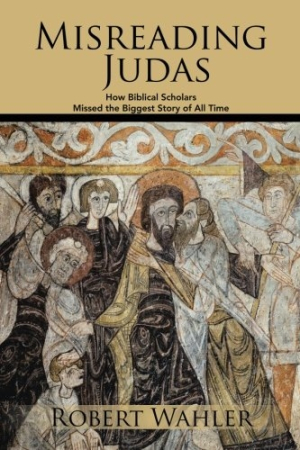
Misreading Judas
How Biblical Scholars Missed the Biggest Story of All Time
This energetic work serves as a beguiling introduction to gnosticism.
If a Dan Brown novel were turned into a dizzying, real-life unraveling of a newly revealed gnostic text, it might read something like Robert Wahler’s Misreading Judas, a heady nonfiction tractate that attempts nothing less than a complete upheaval of traditional Christian exegesis.
Considering the scope of the work, the book, which is divided into four sections, is surprisingly short. Wahler, a lay researcher and writer, relishes in his “outsider” status, taking aim at both Christian orthodoxy and academic orthodoxy. In his introduction, he outlines his ultimate mission: proving that the biblical story of Judas was never a literal betrayal of Jesus but actually a description of the gnostic tradition of mastership succession and self-sacrifice.
To make this case, the book examines The Gospel of Judas, which was first translated in 2006 by the National Geographic Society, as well as selections from the Nag Hammadi Library, a collection of gnostic texts discovered in Egypt in 1945. The book also examines various passages of the New Testament in light of these new gnostic readings.
Misreading Judas’s energetic, investigative tone is at first alluring, though it becomes frenetic, puzzling, and hard to follow. Source excerpts are crammed together in long, uninterrupted litanies, with only brief, intermittent explications. The book succeeds where the sourcing is less indulgent, less tangential, and better layered into clearer, more authoritative conclusions.
The fervent tone also contributes to moments of presumption. The book’s conclusion dismisses modern-day Christians as dupes misled by corrupt institutions, and simultaneously elevates its own status to that of a heroic sage. “It isn’t a question of if, but when,” the book speculates on its own importance to religious scholarship. “No further progress in New Testament study is possible until this report is recognized as true. It will be the standard in due time.”
Such proclamations detract from the book’s strengths. Misreading Judas serves as a beguiling introduction to gnosticism. The strongest passages detail the esoteric history of the spiritual movement, and the personal nature of mysticism. The book astonishingly connects Judas and Jesus’s spiritual practices to Eastern mysticism in India. In striving to locate Eastern precedents in Abrahamic religions, the book offers interesting and novel perspectives on biblical narratives, such as the influence of karmic cycles in the New Testament.
Misreading Judas may prove too busily written and thematically arcane for the uninitiated reader. On the other hand, those interested in history, theology, and philosophy will find more than enough to keep reading.
Reviewed by
Scott Neuffer
Disclosure: This article is not an endorsement, but a review. The publisher of this book provided free copies of the book and paid a small fee to have their book reviewed by a professional reviewer. Foreword Reviews and Clarion Reviews make no guarantee that the publisher will receive a positive review. Foreword Magazine, Inc. is disclosing this in accordance with the Federal Trade Commission’s 16 CFR, Part 255.
